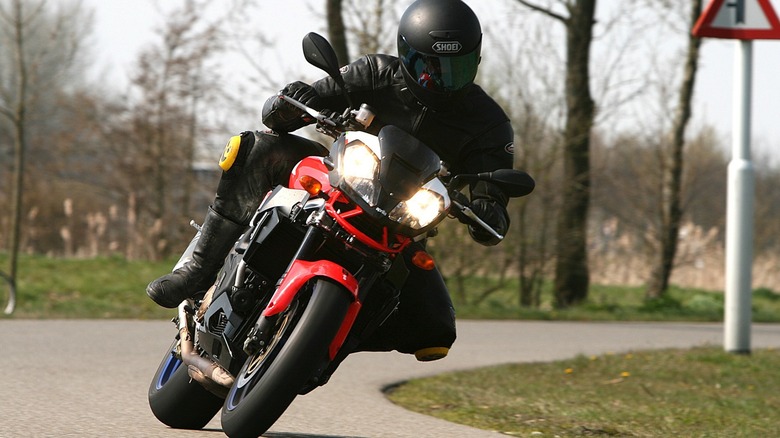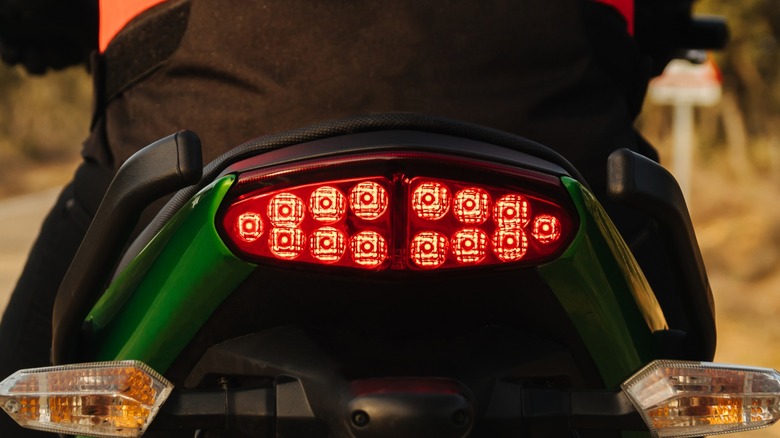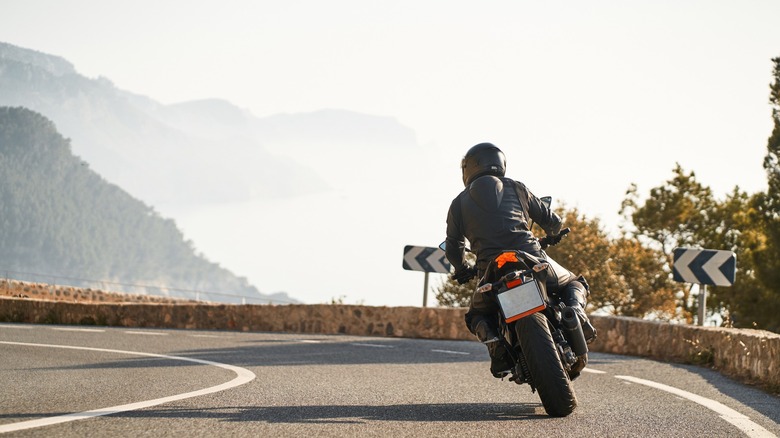What Is Engine Braking On A Motorcycle And Should It Be Avoided?
Having put thousands of miles on motorcycles over the last half century, any brain power I've dedicated to engine braking while riding a bike happened long ago. When presented with the notion that it should be avoided, I realized that a teachable moment had landed in my lap.
If you've driven a car with an automatic transmission, you've employed engine braking, unless you drive with one foot on the accelerator and the other on the brake pedal. Engine braking, in its simplest form, occurs when a decelerating engine reduces the vehicle's speed. It happens every time you take your foot off the gas pedal. The same scenario plays out for EVs using regenerative braking when slowing down.
Engine braking is more pronounced, especially when combined with downshifting, in vehicles with manual transmissions — like most motorcycles — than those with automatics. Downshifting and employing the resulting engine braking is a great way to scrub speed without overusing your brakes, which in extreme cases could lead to brake fade. However, there are some things to consider.
[Featured image by Hwithaar via Wikimedia Commons | Cropped and scaled | CC BY 3.0]
When should engine braking be avoided on a motorcycle?
While it's true that engine braking can save wear and tear on your motorcycle's braking system, it's not always the best method to rapidly slow down. The first thing to consider is the traffic or fellow riders behind you. If you're on a track or twisty section of road, those around you can anticipate slowing down to negotiate curves. However, it's critical to remember that engine braking does not illuminate your brake light to signal to those behind you that you're slowing, and that this could lead to an accident. Under most conditions, it's best to use your brakes, or at least flash your brake light occasionally, in conjunction with engine braking.
You'll quickly become accustomed to how much braking force your motorcycle can endure based solely on the way it feels. Several motorcycle brands offer ABS to prevent brake lock-up and linked braking systems that distribute braking forces to the front and rear brakes together to stop the motorcycle. Engine braking only applies braking force to the rear tire and can cause it to lose traction, especially in slippery conditions or while cornering. Fortunately, some newer motorcycles employ a "slipper clutch" to reduce the likelihood of rear-wheel lock-up during engine braking.
Can engine braking damage my motorcycle?
Engine braking on a motorcycle is safe with certain limitations. You'll need to select the proper gear when downshifting or descending steep grades to ensure the engine rpm remains under the redline. Just like accelerating, exceeding the engine's RPM limit can have dire consequences that could result in catastrophic engine failure. The difference is that in most cases, the bike's rev limiter protects it from over-revving while accelerating, but that protection does not limit rpm while engine braking.
Shutting off the throttle limits the amount of air-fuel mixture entering the combustion chamber, and slows the engine. While four-stroke engines, and some two-strokes have oil reservoirs and oil pumps to keep rotating engine parts lubricated, some two-stroke engines are lubricated by the oil mixed with their fuel. If you're riding a motorcycle powered by a two-stroke engine, there's a possibility of oil starvation when engine braking for extended periods — such as long downhill mountain passes. However, under normal riding conditions, a little engine braking won't harm anything, so long as you take the necessary precautions.


